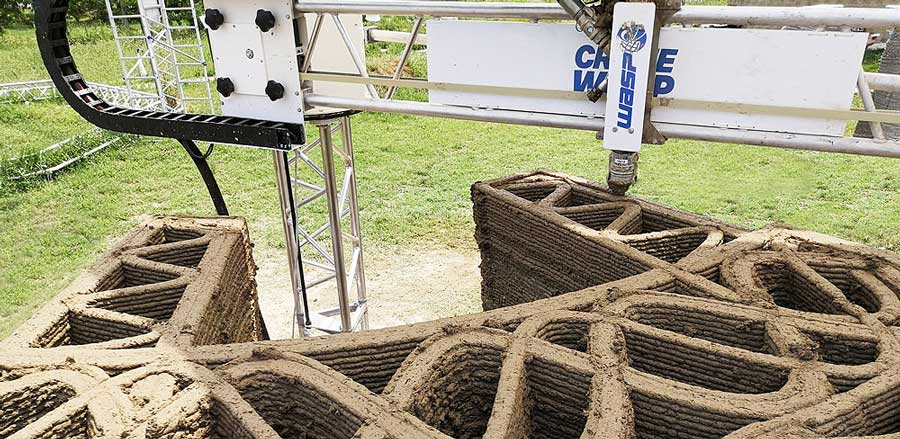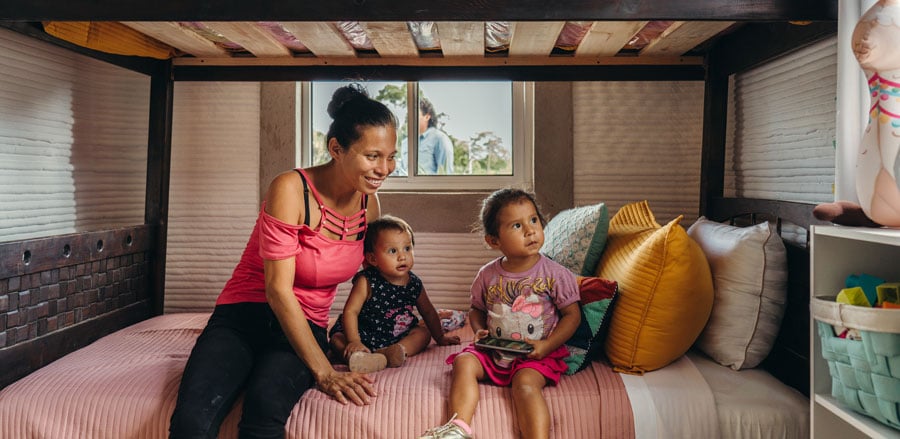3D Printing and Cities of the Future
Can additive manufacturing technologies help to build sustainable cities of the future and to provide more affordable housing options for everyone? Amadu Sou shows how 3D printing can be applied in cutting-edge urban development.
What is 3D Printing and How Can It Affect Future City Layouts?
Often called the technology of the future, 3D printing (or additive manufacturing) has everything it takes to pave the way for next-generation construction jobs. 3D printing is a perfect technology to provide the basis for the construction of cities of the future: it offers sustainability, provides the freedom for smart planning, and has almost no restrictions when it comes to designs. Besides, it makes for an affordable, eco-friendly, and quick on-site construction technology, very much in contrast to those widely employed today.
3D printing is perfect for complex architectural projects. It allows building objects from digital models layer by layer. The ability to reshape even the finest elements of your design with extreme precision allows to create astonishingly accurate projects.
But there is more to cities of the future than refined architecture solutions with intricate geometries. Several other vital factors reshape cities and make them more available, pleasant, and safe to live in. Handily, 3D printing supports these factors as well.
3D Printing, Sustainability, and Eco-Friendly Solutions
Sustainability is one of the most crucial concepts to be taken into account in urban planning. Unlike many modern manufacturing technologies, 3D printing fosters sustainability: it reduces waste by using the exact amount of material it needs, while also contributing to reducing plastic waste and recycling in general. For example, additive manufacturing technologies were employed to create DECIDUOUS – a 3D-printed pavilion made of 30,000 discarded water bottles displayed in the image below.
Another example of such a paradigm shift in architecture would be that of Mario Cucinella, a renowned Italian architect, who built a two-room house entirely 3D-printed with clay – a reusable and recyclable material taken from the nearby terrain. Such projects perfectly illustrate how additive manufacturing can be applied to create on-site eco-friendly solutions with zero waste.

3D-printed earth wall section © Wasp
Another way how 3D printing can reduce emissions is through its capacity to create topologically optimised parts for large-scale machines. The basic idea is that every additional pound of a plane requires an additional gallon of fuel to get the bird off the ground and guide it through the air.
All in all, 3D printing offers optimised resource consumption, produces little to no waste, and is genuinely environmentally friendly. It allows building eco-friendly systems, creating ecovillage and originally designed household items by using recyclable and biodegradable materials.
3D Printing and Affordable Housing Options in the Global South
3D printing can also help to create more affordable housing options by 3D printing houses and even entire residential areas.
For example, in the rural area of Tabasco in Southern Mexico, 3D printing was used to build 50 concrete earthquake-proof houses. Being a joint project between Austin-based ICON and the non-profit New Story, Mexico’s first 3D-printed neighbourhood allowed 50 families with an average income of USD 3/day to switch from living in makeshift huts to reside in neatly-looking houses that include two bedrooms, a living room, and a bathroom. The houses were built with a large-scale construction 3D printer that can build the walls of such a house in just 24 hours, allowing to cut the time required to build a full-fledged home in half.

First 3D community homes, Mexico © Joshua Perez/New Story
Another example of affordable 3D-printed housing is provided by the China-based company WinSun that focusses on the creation of fully 3D-printed residential areas inside and outside of China. The cost of a single house starts at just USD 4,000 and depends on the size, design, and internal equipment. The most expensive versions are equipped with solar panels and offer air conditioning, furniture, a bathroom, and a shower. Currently, a unit can be rented for just USD 150 or USD 200 per month.
The original intention of the company was to create affordable and transportable residential houses, but due to the current epidemiological unease, the buildings were re-equipped and are now used as an isolation ward that prevents the virus from spreading. After the pandemic ends, the districts in Xianning, Hubei, and Rizhao are likely to become a fully sustainable 3D printed city block for people with low incomes.
We should try and rethink the concepts of production of everyday items and products to make them more affordable by using additive manufacturing technologies. In many countries of the Global South, a product’s price is dictated by its transportation costs, ranging as high as 75 per cent of the product’s price. In such cases, the ability to create products on-site would eliminate the need to pay for logistics and make for a much more affordable and competitive market of goods, while also providing cheaper housing options.
Bottom Line
Recognised as one of the main technologies of the future, 3D printing is slowly but surely becoming the future of construction. But it’s not as easy as it looks – we must not only build houses with futuristic design, we must also initiate the paradigm shift, care about the environment, and shape ourselves and our offspring for a good future. 3D printing can provide eco-friendly and affordable construction. However, communities first need to get acquainted with additive manufacturing technologies. They need to rethink default concepts and find ways to mass-produce the most required items to make them affordable.
To ensure that 3D printing technologies have a positive effect on people’s well-being and help fight problems such as homelessness, local authorities, non-profit organisations, and other concerned parties can adopt the technologies mentioned in the article or work out their own, in the long term providing their citizens with more affordable, eco-friendly and adequate housing solutions.
- 3D Printing and Cities of the Future - 10. December 2020
